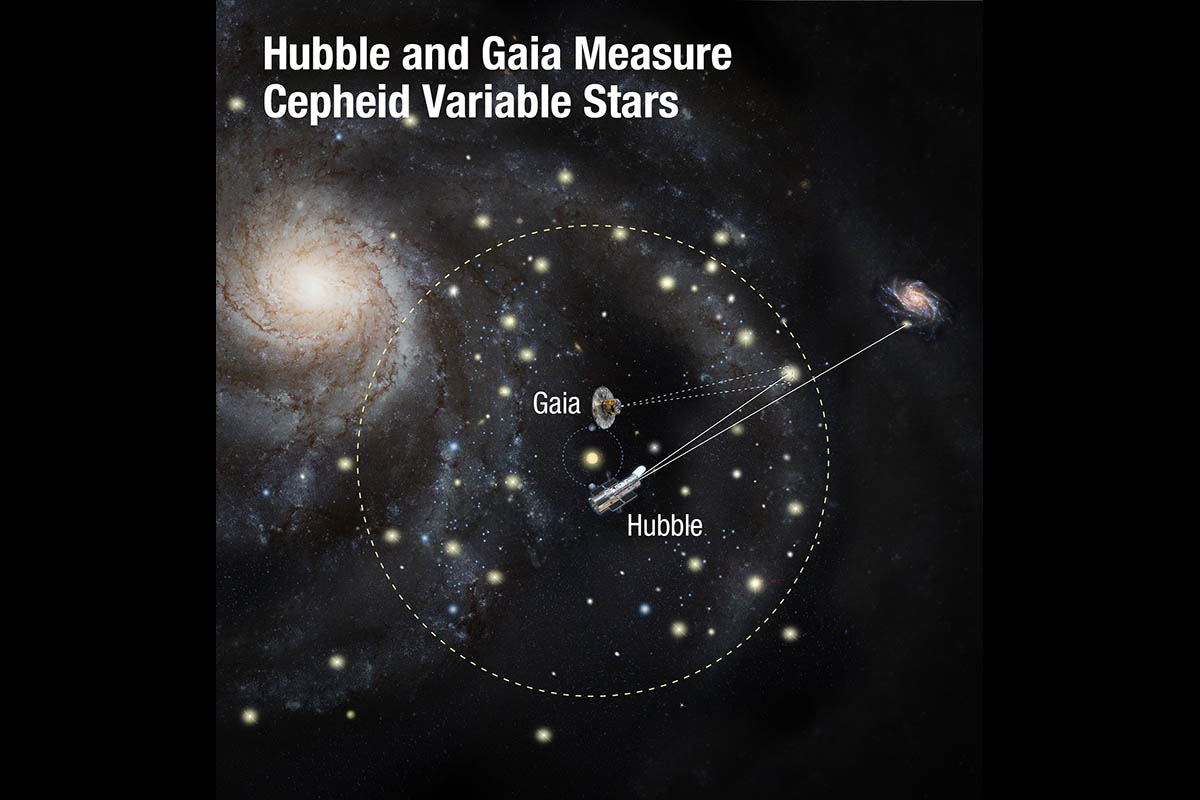Using two of the world’s most powerful space telescopes — NASA’s Hubble and ESA’s Gaia — astronomers have made the most precise measurements to date of the universe’s expansion rate. This is calculated by gauging the distances between nearby galaxies using special types of stars called Cepheid variables as cosmic yardsticks. (NASA, ESA, and A. Feild (STScI))
Home Using two of the world’s most powerful space telescopes — NASA’s Hubble and ESA’s Gaia — astronomers have made the most precise measurements to date of the universe’s expansion rate. This is calculated by gauging the distances between nearby galaxies using special types of stars called Cepheid variables as cosmic yardsticks. (NASA, ESA, and A. Feild (STScI)) Using two of the world’s most powerful space telescopes — NASA’s Hubble and ESA’s Gaia — astronomers have made the most precise measurements to date of the universe’s expansion rate. This is calculated by gauging the distances between nearby galaxies using special types of stars called Cepheid variables as cosmic yardsticks. (NASA, ESA, and A. Feild (STScI))
Using two of the world’s most powerful space telescopes — NASA’s Hubble and ESA’s Gaia — astronomers have made the most precise measurements to date of the universe’s expansion rate. This is calculated by gauging the distances between nearby galaxies using special types of stars called Cepheid variables as cosmic yardsticks. (NASA, ESA, and A. Feild (STScI))


